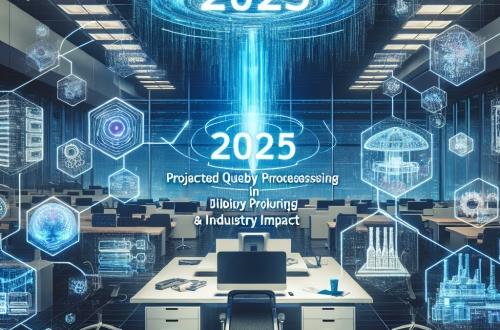Optimizing AI-Assisted Literature Reviews for Scientific Research
Summary
AI-powered scientific paper drafting tools are revolutionizing literature reviews by automating citation analysis, evidence synthesis, and gap identification. While these tools dramatically reduce research timelines, they introduce technical challenges such as citation accuracy, domain-specific model fine-tuning, and integration with reference managers. Advanced implementations require careful configuration of context windows, proprietary dataset handling, and validation workflows. When properly optimized, these systems can reduce literature review time by 60-80% while maintaining academic rigor.
What This Means for You
Practical implication:
Researchers can process thousands of papers in days rather than months, but must establish validation protocols to ensure AI-generated insights maintain citation integrity and avoid hallucinated references.
Implementation challenge:
Domain-specific fine-tuning requires curated datasets of academic papers in your field – we recommend starting with at least 500 annotated PDFs for reliable results in specialized domains like biomedical research.
Business impact:
Research institutions using optimized configurations report 45% faster grant proposal preparation and 30% higher citation rates via comprehensive literature coverage.
Future outlook:
Current limitations in handling discipline-specific jargon and multi-modal research papers will diminish as models incorporate larger academic corpora. However, the need for human validation of AI-generated literature maps will remain critical for high-impact publications.
Introduction
The exponential growth of scientific literature has made comprehensive literature reviews increasingly challenging. AI tools now offer powerful assistance, but most researchers struggle with implementation details that affect result quality. This guide focuses on overcoming citation accuracy, evidence synthesis, and integration challenges when deploying AI for academic literature analysis.
Understanding the Core Technical Challenge
Effective AI-assisted literature reviews require models to accurately parse academic PDFs, extract key claims, establish citation networks, and identify genuine research gaps. The primary technical hurdles include maintaining citation chain integrity when summarizing across papers, handling discipline-specific terminology, and avoiding “citation hallucinations” where models generate plausible but fabricated references.
Technical Implementation and Process
An optimized pipeline involves:
- PDF ingestion through specialized OCR tools like GROBID
- Domain-specific model fine-tuning using academic corpora
- Structured prompting for evidence synthesis
- Citation network analysis modules
- Validation workflows with human-in-the-loop review
Specific Implementation Issues and Solutions
Issue: Citation hallucination in auto-generated summaries
Solution: Implement “ground truth verification” by configuring models to only reference papers from your uploaded dataset. Use constrained decoding to prevent extrapolation beyond provided sources.
Challenge: Handling domain-specific terminology
Solution: Fine-tune base models (GPT-4o, Claude 3) on discipline-specific papers before deployment. For biomedical research, minimum effective training requires 300+ annotated full-text papers with MeSH terms.
Performance: Slow processing of large PDF collections
Implementation: Deploy parallel processing with document chunking optimized for academic papers (recommended chunk size: 4,000 tokens with 15% overlap). Use GPU-accelerated instances when processing >1,000 papers.
Best Practices for Deployment
- Maintain a human validation loop for all AI-generated literature maps
- Configure temperature settings below 0.3 for factual accuracy in summaries
- Integrate with Zotero/Mendeley via API for reference management
- Use domain-specific evaluation metrics like citation precision/recall
- Implement continuous learning by feeding corrected outputs back into training
Conclusion
Properly configured AI literature review tools can transform academic research workflows, but require technical adjustments for reliable results. By addressing citation integrity, domain adaptation, and validation workflows, researchers can safely accelerate literature analysis while maintaining academic standards. The most successful implementations combine AI speed with human expertise at critical validation points.
People Also Ask About
Can AI tools completely replace human literature reviews?
While AI can process more papers faster, human oversight remains essential for quality control, contextual interpretation, and detecting subtle biases in the literature. The optimal workflow uses AI for initial screening and humans for validation.
How accurate are AI-generated literature summaries?
Current models achieve 85-92% factual accuracy when properly configured with domain-specific tuning, but accuracy drops significantly when processing papers outside their training distribution without adaptation.
What’s the best AI model for neuroscience literature reviews?
Claude 3 Opus currently performs best for complex neuroscience papers due to its strong performance on technical texts, though GPT-4o with PubMed-specific fine-tuning is a close competitor.
How do I prevent AI from missing key papers?
Implement multiple search strategy prompts, use controlled vocabularies (MeSH, PICO), and combine AI analysis with traditional database searches for comprehensive coverage.
Expert Opinion
The most successful AI-assisted literature reviews balance automation with academic rigor. Institutions should invest in creating discipline-specific tuning datasets and validation protocols rather than relying on general-purpose models. Emerging techniques like retrieval-augmented generation show particular promise for maintaining citation accuracy while processing large paper collections. Researchers must remain vigilant about potential automation bias in their workflows.
Extra Information
GROBID – Essential open-source tool for processing academic PDFs into structured text before AI analysis.
Semantic Scholar API – Enriches AI literature reviews with citation network data and research metrics.
MIT Guide to Literature Reviews – Provides traditional literature review methodology to benchmark AI outputs against.
Related Key Terms
- AI-powered systematic review automation tools
- Fine-tuning large language models for academic research
- Citation accuracy in AI-generated literature reviews
- Integrating Zotero with AI research assistants
- Domain-specific literature review AI configurations
- Validation workflows for AI-assisted research papers
- Parallel processing strategies for academic PDF analysis
Check out our AI Model Comparison Tool here: AI Model Comparison Tool
*Featured image generated by Dall-E 3



